 Tanner Report: Tamron 18-250mm f/3.5-6.3 Di II
Tanner Report: Tamron 18-250mm f/3.5-6.3 Di II Tanner Report: Tamron 18-250mm f/3.5-6.3 Di II
Tanner Report: Tamron 18-250mm f/3.5-6.3 Di IIWant a wide-to-telephoto lens that's sharp (both center and corners), has very little chromatic aberration and vignetting, almost no distortion, and is fast? Who doesn't? (Just don't hold your breath.) Read on and see how well Tamron's relatively new 18-250mm (13.9x) f/3.5-6.3 Macro lens approaches this dream.
Be sure to check out the Blur viewer shown on the main page for this lens. The first plot in the sequence (18mm, f/3.5) reveals a pretty sharp center with one very soft corner. These asymmetric blur plots are not unusual for wide-open lenses. As you move through the subsequent plots, keeping the focal length at 18mm, you will notice that the center remains relatively sharp and the corners improve. At f/8, the blur plot is relatively flat and sharp. From f/11 through f/22, the blur plot remains quite flat while diffraction effects begin to degrade the image; and at f/22 the image is quite soft. This general description characterizes the blur plots for all higher focal lengths.
Of course, Tamron's Di II designation indicates that this lens is not designed for full-frame bodies. This necessity to cover only the smaller APS-C sensor enables a smaller, more compact, lighter lens than FF design would permit.
In the sections which follow, we will look at this lens' characteristics in more detail, compare it to a few similar/comparable lenses, and summarize the overall performance of the Tamron 18-250mm.
Center-Corner Sharpness
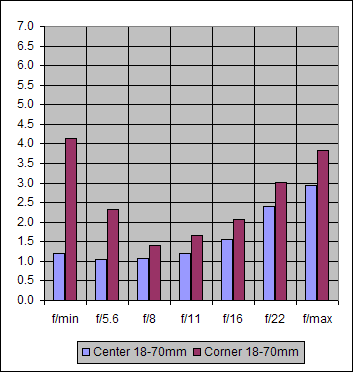
Figure 1. Center/Corner Sharpness for 18-70mm Range
Figure 1 displays the Center/Corner performance of the Tamron 18-250mm lens for over the 18-70mm focal length range. Each bar in this figure represents, for the indicated aperture, an average of the 18mm, 35mm, 50mm and 70mm values measured for that aperture. First, notice the initial and final columns of the graph. The f/min Center/Corner Sharpness values summarize the 18-70mm performance with the lens wide open (f/3.5@18mm, f/4@35mm, f/4.5@50mm, f/5@70mm) at each focal length tested. The blue bar (blur = 1.2) indicates a sharp center (DxO's characterization for blur values in the range 0.5-1.5) with very blurred corners. Secondly, the final column labeled f/max depicts the 18-70mm performance with the lens closed down (f/22@18mm, f/29 @ 25mm, f/29@35mm, and f/32 at 70mm) at each focal length tested. Diffraction effects have severely degraded the center/corner sharpness for the settings. The blue bars for f'/5.6-f/16 show blur values in the 1.0-1.5 range indicating that the center remains "sharp" throughout this range with a "shallow" minimum value of 1.08 at f/8. The corners go through a distinct sharpness minimum of 1.42 at f/8. Summarizing, in the 18-70mm focal-length range, the Tamron 18-250mm lens displays very good center sharpness from wide-open through f/16, has soft corners at low and high apertures, and relatively sharp corners at f/8 and f/11. In the 18-70mm focal-length range, the lens displays its "best" sharpness performance at f/8.
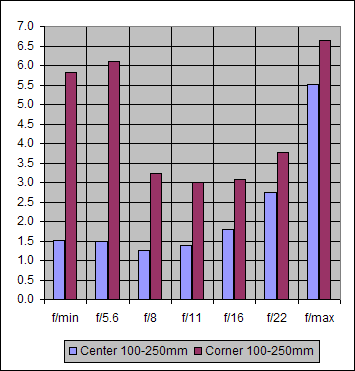
Figure 2. Center/Corner Sharpness for 100-250mm Range
Figure 2 repeats the information of Figure 1 for the 100-250mm range of the Tamron 18-250mm lens. The general features are similar to those of Figure 1. The Center portion is "Sharp" from wide-open through f/11 and degrades thereafter as diffraction effects set in. The Corners don't perform too well. Low-aperture and high-aperture corners are very blurred; and even the minimum value of 3.0 at f/11 merits a "Noticeably Blurred" rating.
Throughout its 18-250mm focal-length range, the Tamron displays sharp center focus from wide-open to f/11. For lower focal lengths, 18-100mm, the corners are reasonably sharp in the f/8-f/11 aperture range. Otherwise the corners are soft to very soft, particularly at lower and higher apertures. And throughout the entire focal-length range, an aperture setting of f/8 provides both the best center and corner performance.
Chromatic Aberration
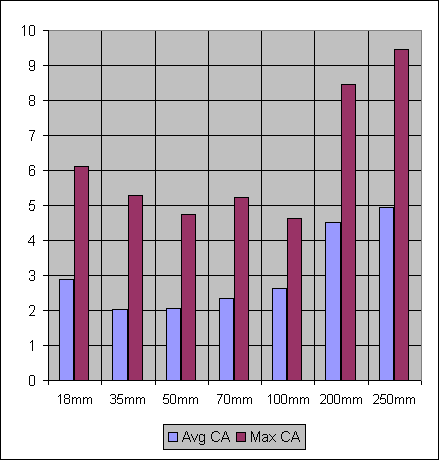
Figure 3. Chromatic Aberration for the Tamron 18-250mm
Figure 3 summarizes the Chromatic Aberration performance for the Tamron 18-25-mm lens. The blue/rust bars for each focal length represents an average for the f/5.6-f/22 aperture range. That is, the rust bar for 35mm indicates a Maximum Chromatic Aberration of 5.3. This is the average of the f/5.6-f/22 MaxCA values at 35mm. Using an A, B, C, D, F scale, the CA performance of the Tamron 18-250mm lens is a low C or high D rating.
Shading ("Vignetting")
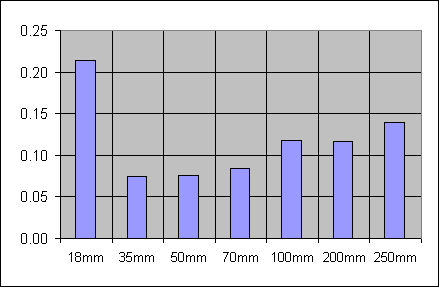
Figure 4. Shading for the Tamron 18-250mm
The blue bar for each focal length of Figure 4 represents the average Shading over the f/5.6-f/22 range for that the indicated focal length. The Tamron 18-250mm lens gets a low B, slightly better than average, for its Shading performance.
Distortion
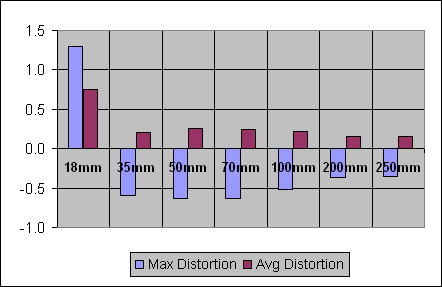
Figure 5. Distortion for the Tamron 18-250mm
Again, the (Maximum/Average) Distortion bars of Figure 5 represent an average of the f/5.6-f/22 values for the indicated focal length. The transition from positive (barrel) distortion at 18mm to negative (pincushion) distortion for all other focal lengths might represent a manufacturer's effort to control distortion over a wide zoom-range. While probably not too noticeable in most (non-straight-line) photos, these values are a bit high and earn a low "C" grade for the Tamron 18-250mm Shading performance.
AF Operation
Auto focus on the Tamron 18-250mm lens focusses quite rapidly (one second or less) in good light for the entire 18-250mm range. While it's not silent, it is reasonably quiet. In low light, particularly at higher focal lengths, it can struggle and, at times, cannot achieve focus. The manual focus ring, which works only in the MF mode, functions reasonably well. At 250mm, the distance (lens-to-target) of closest focus is about 21 cm (8") with the image spanning a horizontal distance of 7.3 cm (2 7/8"). The AF operation of the Tamron 18-250mm earns a "B" Grade.
Build and Quality
The Tamron 18-250mm f/3.5-6.3 lens has a solid build; its balance on the Canon 20D is excellent and produces a very comfortable hold. It does not feel heavy, even after an hour of regular use. The (telescopic) zoom works smoothly throughout the 18-250mm range. The zoom control is a bit stiff and exhibits no zoom-creep. A lens hood is provided with the lens; it's a bit tedious to remove and remount, but then there's little reason to be doing so. The Tamron 18-250mm lens "Build and Quality" merits a solid "B" grade.
Comparisons With Other Lenses
We will compare the Tamron 18-250mm f/3.5-6.3 optical performance with that of its predecessor, the Tamron 18-200mm f/3.5-6.3; its competitor, the Sigma 18-200mm f/3.5-6.3; the Canon EF-S 18-55mm f/3.5-5.6 "kit" lens; and, finally, the excellent Canon 70-200mm f/4L lens. At the end of the line identifying each of these lenses, we show a typical street-value price to compare to the $499 price for the Tamron 18-250mm. In these tests, all lenses were mounted on the Canon 20D.
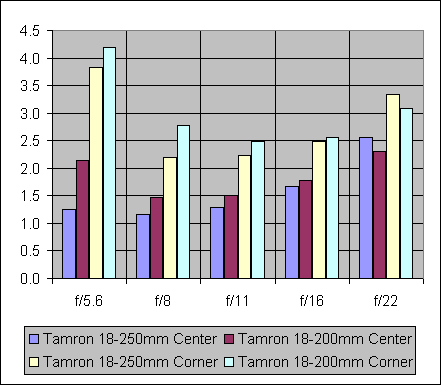
Figure 6. Center/Corner Sharpness for Tamron 18-250mm and Tamron 18-200mm
Each bar in Figure 6 is the average (over 18mm-200mm) sharpness for the specified lens at the specified aperture. For example, the blue f/5.6 bar is the average (over 18mm - 200mm) Center Sharpness for the Tamron 18-250mm lens. Comparison, then of the blue (Tamron 18-250mm) and rust (Tamron 18-200mm) bars for the f/5.6-22 aperture spectrum shown, indicates that the (new) Tamron 18-250mm lens has a slight edge in Center Sharpness over its predecessor, the Tamron 18-200mm. A corresponding comparison of the light yellow and light blue bars indicates that the two lenses have very similar Corner Sharpness performances.
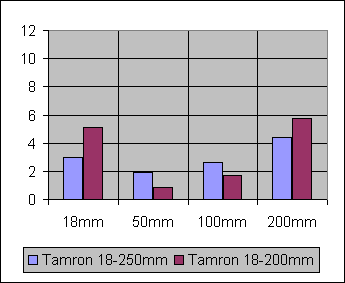
Figure 7. Average CA for Tamron 18-250mm and Tamron 18-200mm
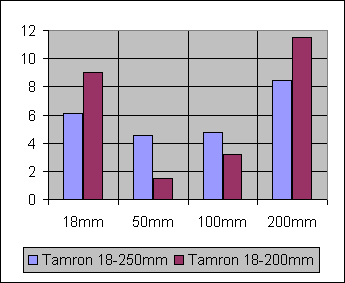
Figure 8. Maximum CA for Tamron 18-250mm and Tamron 18-200mm
Figures 7 and 8 indicate that the (new) Tamron 18-250mm lens has slightly better CA performance at 18mm and 200mm while the (old) Tamron 18-200mm lens has better CA performance at 50mm and 100mm. All in all, we call the Chromatic Aberration comparison between the two lenses to be a draw.
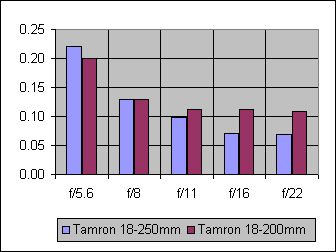
Figure 9. Shading for Tamron 18-250mm and Tamron 18-200mm
A perusal of Figure 9 indicates that the (new) Tamron 18-250mm lens may have a slight edge over the (old) Tamron 18-200mm, but the overall differences are so small that we call this contest a draw.
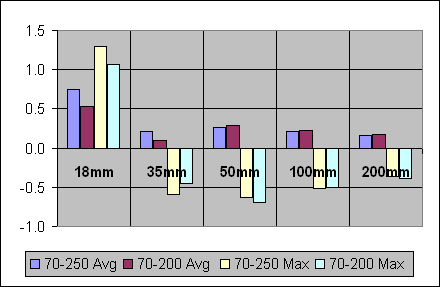
Figure 10. Distortion for Tamron 18-250mm and Tamron 18-200mm
Figure 10, which depicts the Average Distortion and Maximum Distortion for the two Tamron lenses shows very little overall difference between the two lenses. Again, we call this contest a draw.
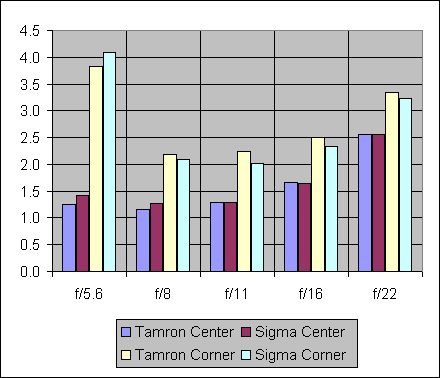
Figure 11. Center/Corner Sharpness for Tamron 18-250mm and Sigma 18-200mm
Only a quick study of Figure 11 is required to ascertain that the Center/Corner Sharpness performances of these two lenses is essentially identical.
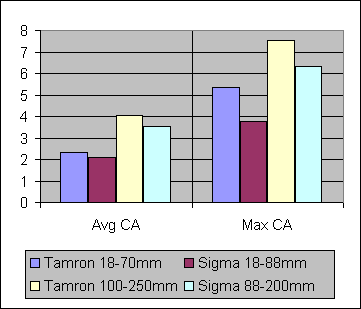
The Chromatic Aberration (Maximum and Average) performance by the Tamron 18-250mm lens is slightly worse (higher) than that of the Sigma 18-200mm
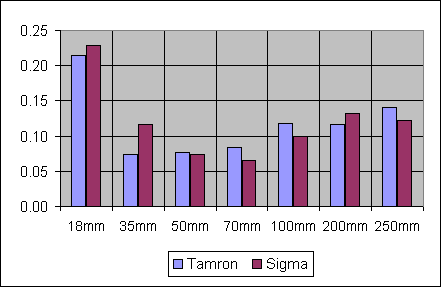
Figure 13. Shading for Tamron 18-250mm and Sigma 18-200mm
There is little, if any, perceptible overall difference between the Shading performances of these two lenses.
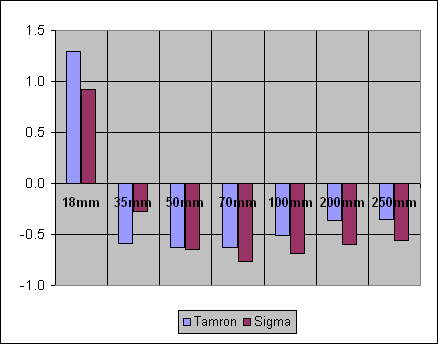
Figure 14. Maximum Distortion for Tamron 18-250mm and Sigma 18-200mm
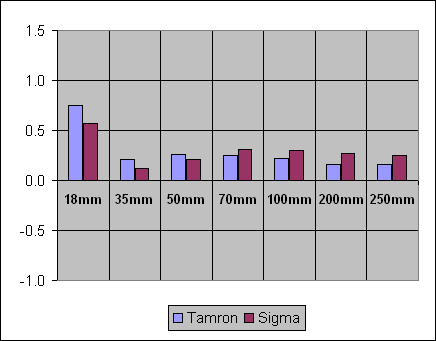
Figure 15. Average Distortion for Tamron 18-250mm and Sigma 18-200mm
Figures 14 and 15 both indicate that the Tamron 18-250mm lens has slightly better Distortion values for shorter focal lengths. The Distortion advantage shifts to the Sigma 18-200mm lens for the longer focal lengths. Overall, the distortion competition is a "Draw".
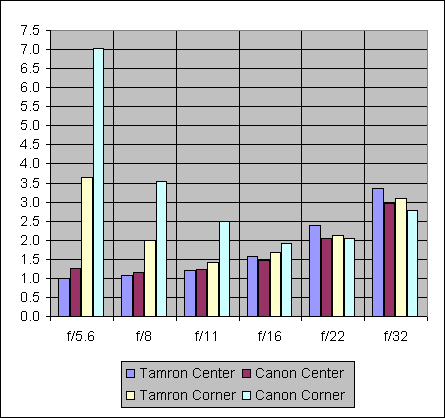
Figure 16. Center/Corner Sharpness for Tamron 18-250mm and Canon 18-55mm
The Center Sharpness performances of the Tamron 18-250mm (blue bars) and the Canon 18-55mm (rust bars) lenses are essentially indistinguishable. (Remember DxO's statement that blur values differing by less than one blur unit are not easily perceived by the eye.) For f/5.6- f/11, the Tamron corners are noticeably sharper than those of the Sigma lens; above f/11, the corners of both lenses measure about the same, from "slightly blurred" at f/16 to "noticeably blurred" at f/32. (Note that the averaging for a specified aperture is over the 18-50mm range for the Tamron and the 18-55mm range for the Canon.)
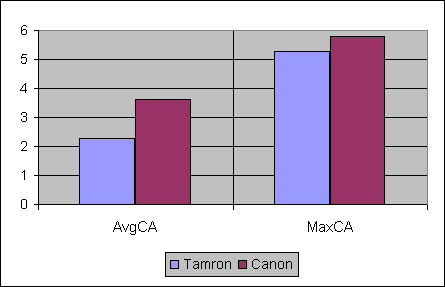
Figure 17. Chromatic Aberration for Tamron 18-250mm and Canon 18-55mm
Figure 17 indicates slightly better Chromatic Aberration (Maximum and Average) performance by the Tamron 18-250mm lens than that of the Canon 18-55mm.
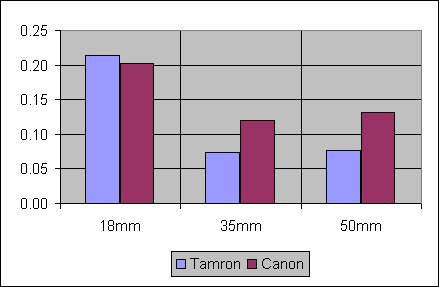
Figure 18. Shading for Tamron 18-250mm and Canon 18-55mm
While the Shading performance by both lenses is quite acceptable, the Tamron 18-250mm lens has (very slightly) better Shading values than those of the Canon 18-55mm lens.
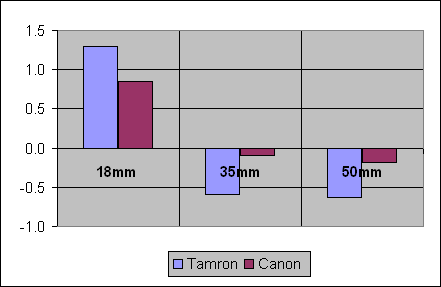
Figure 19. Maximum Distortion for Tamron 18-250mm and Canon 18-55mm
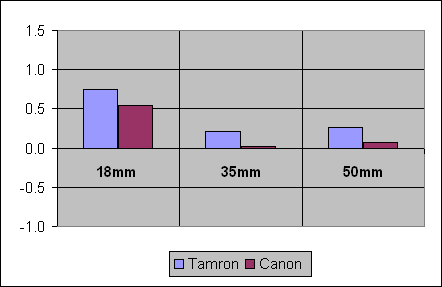
Figure 20. Average Distortion for Tamron 18-250mm and Canon 18-55mm
Figures 19 and 20 reveal decidedly lower Distortion (Maximum and Average) values for the Canon 18-55mm lens.
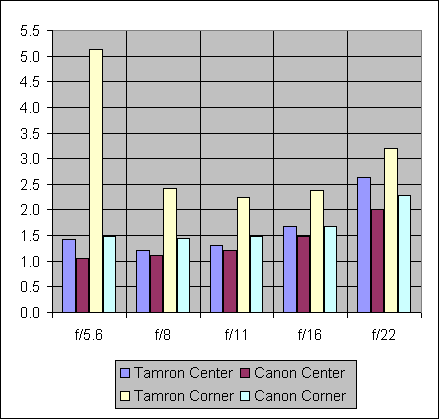
Figure 21. Center/Corner Sharpness for Tamron 18-250mm and Canon 70-200mm
While Figure 21 indicates that the (rust-bar) Center Sharpness of the Canon 70-200mm lens is slightly better than that of the (blue-bar) Tamron 18-250mm lens, the differences are probably not perceptible. (Remember the DxO one-blur-unit rule.) But the f/5.6 and f/8 Corner sharpness of the Canon lens is significantly (perceptibly) better than that of the Tamron. Above f/8, the Canon Corners still outperform those of the Tamron, but the differences are probably not perceptible. (Averages for a specified aperture are over the 70-200mm range for each lens.)
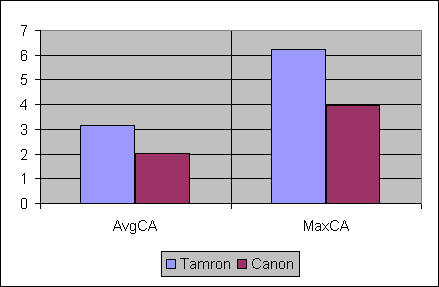
Figure 22. Chromatic Aberration for Tamron 18-250mm and Canon 70-200mm
The Canon 70-200mm f/4L lens wins the Chromatic Aberration (Maximum and Average) competition with the Tamron 18-250mm f/3.5-6.3 lens.
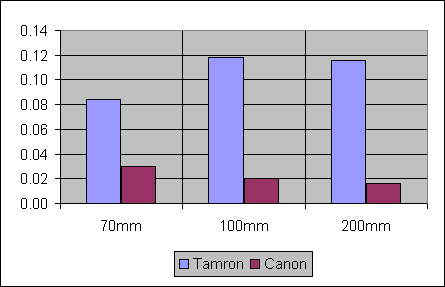
Figure 23. Shading for Tamron 18-250mm and Canon 70-200mm
Figure 23 reveals a significant Shading advantage for the Canon 70-200mm lens over the Tamron 18-250mm lens. Even so, the Tamron performance is quite acceptable.
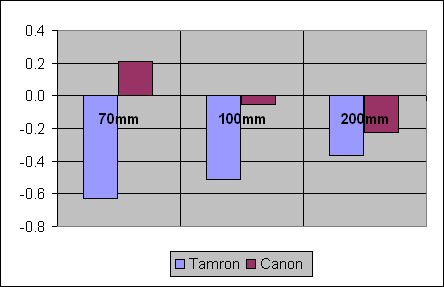
Figure 24. Maximum Distortion for Tamron 18-250mm and Canon 70-200mm
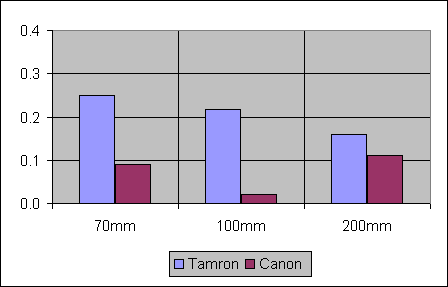
Figure 25. Average Distortion for Tamron 18-250mm and Canon 70-200mm
The excellent Canon 70-200mm f/4L lens wins again! Figures 24 and 25 show distinct "Distortion" advantages for the Canon over the Tamron 18-250mm.
Conclusions
The Tamron 18-250mm f/3.5-6.3 lens is a well-built, smoothly-functioning lens that exhibits good Center Sharpness. Corner Sharpness is not so good except at f/5.6-f/8 over lower range focal lengths. Chromatic Aberration is slightly worse than average; Shading and Distortion are average. Our comparisons with three other lenses are summarized below.
|
Cen
|
Cor
|
CA
|
Shad
|
Dist
|
Total
|
|
|
Tamron 18-200mm
|
+1
|
0
|
0
|
0
|
0
|
+1
|
|
Sigma 18-200mm
|
0
|
0
|
-1
|
0
|
0
|
-1
|
|
Canon 18-55mm
|
0
|
+1
|
+1
|
+1
|
-2
|
+1
|
|
Canon 70-200mm
|
0
|
-2
|
-1
|
-2
|
-2
|
-7
|
|
Total
|
+1
|
-1
|
-1
|
-1
|
-4
|
-6
|
In Table 3 where we summarize the Comparison Section, the (subjective) cell values should be given the following interpretations:
|
+2
|
Better Performance by Tamron 18-250
|
|
+1
|
Slightly better performance by Tamron 18-250
|
|
0
|
No significant difference
|
|
-1
|
Slightly worse performance by Tamron 18-250
|
|
-2
|
Worse performance by Tamron 18-250
|
The content of Table 2 indicates that the Tamron 18-250mm ($599) is significantly outperformed by the Canon 70-200mm f/4L ($580); slightly outperforms the Tamron 18-200mm F/3.5-6.3 ($389) and the Canon 18-55mm f/3.5-5.6 ($140); and is edged out by the Sigma 70-200mm f/3.5-6.3 ($379). It should be noted that none of these competitors have the Macro capability of the Tamron 18-250mm lens.
The Tamron 18-250mm f/3.5-6.3 Macro lens is a pretty good, slightly pricey, travel zoom for sub-frame bodies. To the extent that you can keep your shots in the f/5.6-f/11 range, you can expect to get satisfactory results. A personal note: Over a period of a few weeks when I have used and tested this lens extensively, I have been surprised at how good the f/5.6-f/8 images actually are. Perhaps these tests we use here are somewhat demanding!
For your perusal, here's a sample photo using the Tamron 18-250mm f/3.5-6.3 lens on my Canon 30D.
250mm, f/7.1, 1/400s, ISO100, RAW-jpeg-resized with no Post Processing
And for more fun, here's a 100% crop (400x399 pixels). (It looks like there may be very slight motion blur on this shot, but the level of detail captured by the lens is nonetheless quite impressive.)

Not too bad for an 18-250mm "vacation" zoom!
Enough fun!
Back to work!
More lenses waiting!
Dave's getting anxious!!